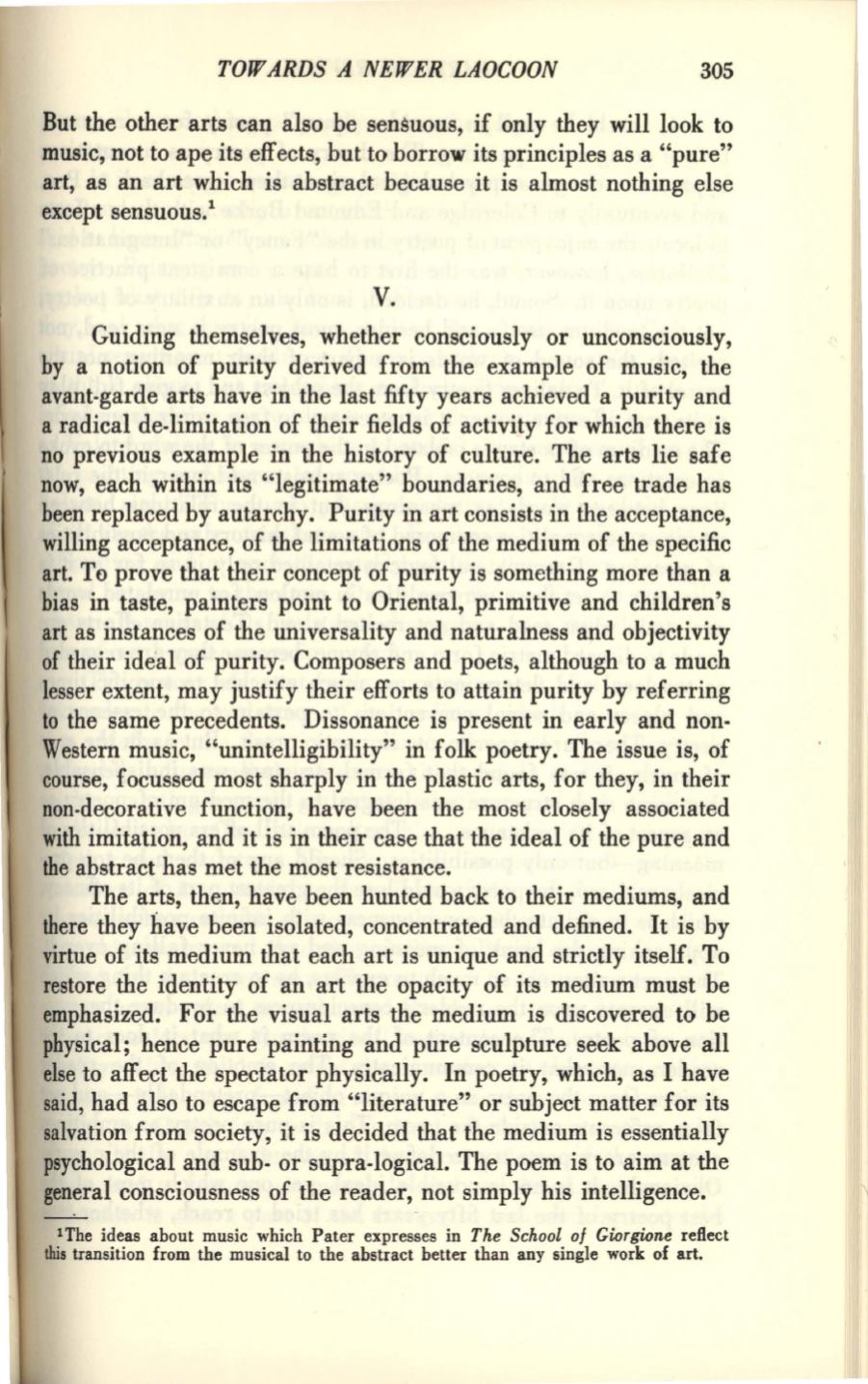
TOWARDS A NEWER LAOCOON
305
But the other arts can also be sensuous, if only they will look to
music, not to ape its effects, but to borrow its principles as a "pure"
art, as an art which is abstract because it is almost nothing else
except sensuous.
1
v.
Guiding themselves, whether consciously or unconsciously,
by a notion of purity derived from the example of music, the
avant-garde arts have in the last fifty years achieved a purity and
a radical de-limitation of their fields of activity for which there is
no previous example in the history of culture. The arts lie safe
now, each within its "legitimate" boundaries, and free trade has
been replaced by autarchy. Purity in art consists in the acceptance,
willing acceptance, of the limitations of the medium of the specific
art. To prove that their concept of purity is something more than a
bias in taste, painters point to Oriental, primitive and children's
art as instances of the universality and naturalness and objectivity
of their ide.al of purity. Composers and poets, although to a much
lesser extent, may justify their efforts to attain purity by referring
to the same precedents. Dissonance is present in early and non–
Western music, "unintelligibility" in folk poetry. The issue is, of
course, focussed most sharply in the plastic arts, for they, in their
non-decorative function, have been the most closely associated
with imitation, and it is in their case that the ideal of the pure and
the abstract has met the most resistance.
The arts, then, have been hunted back to their mediums, and
there they have been isolated, concentrated and defined. It is by
virtue of its medium that each art is unique and strictly itself. To
restore the identity of an art the opacity of its medium must be
emphasized. For the visual arts the medium is discovered to be
physical; hence pure painting and pure sculpture seek above all
else to affect the spectator physically. In poetry, which, as I have
said, had also to escape from "literature" or subject matter for its
salvation from society, it is decided that the medium is essentially
psychological and sub- or supra-logical. The poem is to aim at the
general consciousness of the reader, not simply his intelligence.
1
The ideas about music which Pater expresses in
The School of Giorgione
reflect
this
transition from the musical to the abstract better than any single work of art.


